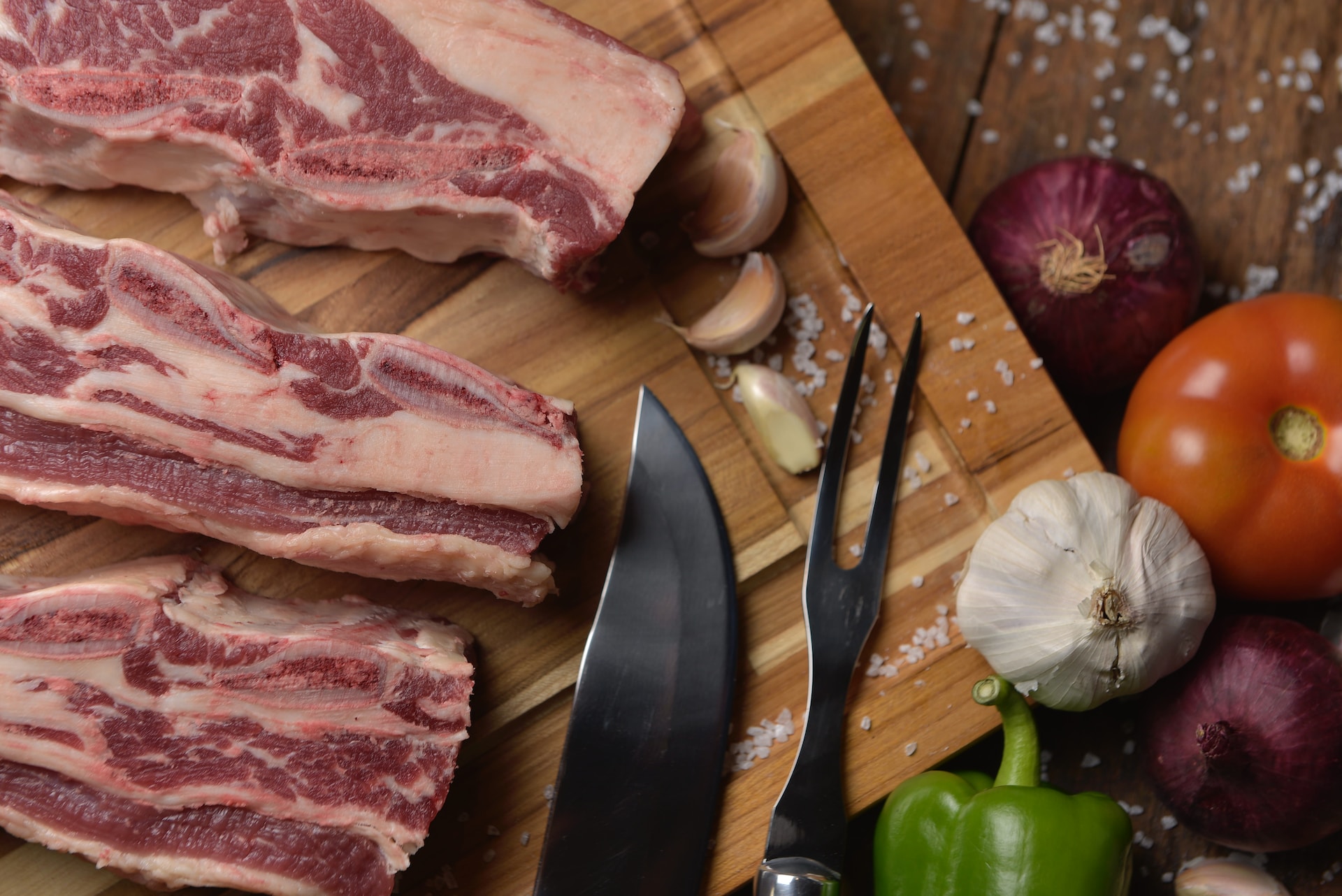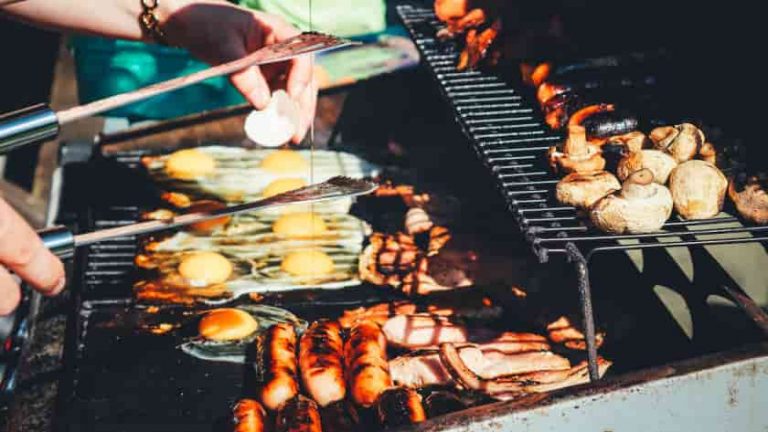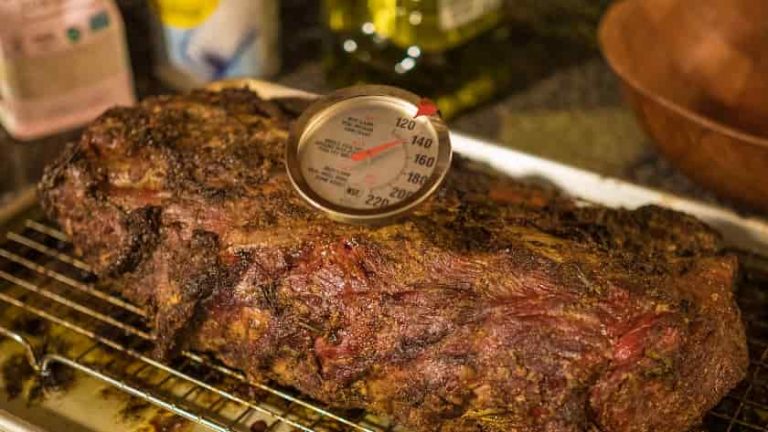Learn How to BBQ the Perfect Pork Belly Burnt Ends
If you’re a fan of barbecue, then you’ve probably heard of pork belly burnt ends. These delicious, melt-in-your-mouth morsels of meat are a favorite among BBQ enthusiasts.
In this article, we’ll take you through everything you need to know about preparing and smoking pork belly burnt ends. From choosing the right wood for smoking to achieving the perfect texture and glaze, we’ve got all the tips and tricks you need to create the perfect pork belly burnt ends.
So, grab your apron and let’s get cooking!
What Are Pork Belly Burnt Ends?
Pork belly burnt ends are a delectable barbecue delicacy known for their irresistible combination of succulent pork belly, flavorful seasonings, and a caramelized exterior that provides a satisfying crunch and burst of savory goodness.
The succulent texture of pork belly burnt ends is achieved through slow cooking, allowing the fat to render and the meat to become tender and juicy. The savory flavor comes from a careful balance of spices, sauces, and smoke, creating a rich and satisfying taste that lingers on the palate.
The crispy exterior, a result of caramelization from the BBQ process, adds a delightful contrast to the tender meat, making each bite a meaty indulgence that is undeniably delicious.
How to Prepare Pork Belly Burnt Ends?
Preparing pork belly burnt ends involves a series of carefully curated steps, from selecting a premium cut of pork belly to meticulously seasoning and slow-cooking the meat to achieve optimal tenderness and flavor.
What Ingredients Do You Need?
To create mouthwatering pork belly burnt ends, you’ll need a set of essential ingredients including premium pork belly, a tantalizing seasoning or dry rub, a flavorful marinade or brine, and a delectable glaze consisting of honey, sugar, and aromatic spices.
The key to perfecting pork belly burnt ends starts with selecting a high-quality slab of pork belly, which should have a good balance of fat and lean meat.
A savory dry rub comprising a mix of salt, pepper, paprika, garlic powder, and any other desired spices adds depth and flavor to the meat.
Marinating the pork belly in a combination of apple cider vinegar, Worcestershire sauce, and brown sugar before smoking it enhances its tenderness and taste.
A sweet and tangy glaze made from a blend of BBQ sauce, honey, and butter is brushed on during the final stages of cooking to deliver a sticky, caramelized finish.
How to Trim and Season the Pork Belly?
Trimming and seasoning the pork belly is a crucial step in the process of creating succulent burnt ends. This requires meticulous attention to the fat marbling, seasoning distribution, and achieving a perfect balance of tenderness and caramelized flavor.
Carefully selecting a pork belly with well-distributed fat is essential to ensure flavor and juiciness. As the fat renders during cooking, it imparts rich, savory notes and enhances the tenderness of the meat.
The seasoning process, whether using a dry rub or marinade, helps to develop a caramelized crust and infuse the pork with layers of flavor. The desired outcome is a melt-in-your-mouth texture and a deliciously smoky, succulent taste that is sure to tantalize the taste buds.
What Is the Best Wood for Smoking Pork Belly Burnt Ends?
Selecting the right wood for smoking pork belly burnt ends is essential to infuse the meat with a delightful aroma and a distinct flavor profile. Options such as applewood and hickory offer a perfect balance of smokiness and savory succulence.
Different wood types not only affect the flavor but also the aroma and overall succulence of the pork belly burnt ends. For instance, applewood lends a subtle, fruity sweetness to the meat, while hickory imparts a robust, bacon-like smokiness. Each wood variety brings its unique characteristics, allowing for a personalized touch to the dish.
It’s important to consider the density and intensity of the wood’s smoke as well, as this can influence the depth of flavor infused into the pork belly burnt ends.
How to Smoke Pork Belly Burnt Ends?
Smoking pork belly burnt ends requires a meticulously controlled process, involving the use of a quality smoker, precise temperature management, the infusion of aromatic smoke from applewood or hickory, and the gradual development of a tantalizing bark that enhances the succulent texture and robust flavor of the meat.
What Is the Ideal Temperature and Time for Smoking?
Achieving the ideal temperature and smoking time is critical to unlocking the full potential of pork belly burnt ends. This allows for the development of a tantalizing aroma, a juicy and succulent texture, and the coveted smoke ring that signifies expertly smoked meat.
This delicate balance of temperature and smoking duration directly impacts the tenderness and succulence of the meat. Maintaining a consistent low temperature over an extended period allows the fat to render slowly, infusing the meat with rich flavor while ensuring a buttery, melt-in-your-mouth texture.
The prolonged exposure to gentle smoke creates the distinctive smoke ring, enhancing both the visual appeal and the depth of flavor of the burnt ends.
It’s essential to monitor these factors closely to achieve pork belly burnt ends that truly shine.
How to Create a Moist and Tender Texture?
Creating a moist and tender texture in pork belly burnt ends requires a delicate balance of smoking techniques, fat rendering, and meat composition, resulting in a succulent mouthfeel and an explosion of juiciness with each delectable bite.
By carefully controlling the smoking process, the pork belly absorbs the perfect amount of wood-fired flavor, enhancing its succulence.
The slow and low heat aids in the breakdown of connective tissues, leading to a melt-in-your-mouth tenderness. As the fat renders during the cooking process, it bastes the meat, ensuring a rich and moist texture.
The choice of pork belly with a well-distributed fat-to-meat ratio plays a pivotal role in achieving that mouthwatering juiciness that defines exceptional burnt ends.
When to Wrap the Pork Belly?
Knowing when to wrap the pork belly during the smoking process is crucial for maintaining optimal tenderness, juiciness, and the development of a desirable bark, while also ensuring that the meat retains its smoky essence and succulent texture.
To optimize readability and SEO, it’s advisable to break paragraphs into concise, easily digestible sentences. Add
tags to the text given and aim for a maximum of two sentences per
tag section, allowing multiple
tags. This approach enhances user experience and search engine indexing.
Wrapping the pork belly at the right time helps to lock in moisture and prevent the exterior from becoming too tough. Typically, you should aim to wrap the pork belly once it has achieved a rich, mahogany color and has absorbed a substantial amount of smoke. This phase, often referred to as the ‘stall,’ is when the meat’s natural juices are redistributed, leading to enhanced tenderness and juiciness. As the pork belly continues to cook wrapped, it further absorbs the flavorful smoke, intensifying its smoky essence and developing a mouthwatering bark that adds depth to the overall flavor profile.
How to Glaze Pork Belly Burnt Ends?
Glazing pork belly burnt ends is an artful process that involves the application of a delectable sauce, a tantalizing blend of honey and sugar, and the creation of a savory-sweet, caramelized exterior that embodies the distinct flavors of Kansas City-style or Memphis-style barbecuing, with options for a hint of tangy or spicy undertones.
What Is the Best Sauce for Glazing?
Choosing the best sauce for glazing pork belly burnt ends involves a consideration of the desired flavor profile. Options such as savory-sweet Kansas City-style or tangy Memphis-style offer distinctive and tantalizing choices to complement the succulent meat.
The savory-sweet Kansas City-style sauce is marked by its rich, molasses-based sweetness, which perfectly offsets the smoky flavors of the pork belly.
On the other hand, the tangy Memphis-style sauce, with its vinegar and mustard undertones, provides a delightful contrast that cuts through the richness of the meat.
Each option brings a unique culinary experience, adding depth and complexity to the barbecuing process, and ensuring a memorable and satisfying feast for both the host and their guests.
How to Achieve a Sticky and Caramelized Glaze?
Achieving a sticky and caramelized glaze on pork belly burnt ends requires a meticulous application of a tantalizing mixture of sugar and honey, resulting in a flavorful bark, delightful texture, and a satisfying mouthfeel with each delectable bite.
The process involves coating the pork belly burnt ends with the sugar and honey mixture before placing them back on the grill or smoker to allow the glaze to caramelize.
This technique not only enhances the visual appeal of the dish but also contributes to the development of a crispy, mouthwatering crust. The infusion of sweet and savory flavors from the glaze creates a perfect balance that complements the rich, smoky essence of the pork, elevating the overall taste experience.
What Are the Tips for Perfect Pork Belly Burnt Ends?
Mastering the art of creating perfect pork belly burnt ends entails a range of expert tips, from preventing dryness and enhancing flavor to elegantly serving and meticulously storing the succulent, juicy delicacy, while ensuring a captivating bark and an impeccable presentation.
How to Prevent Dryness?
Preventing dryness in pork belly burnt ends involves strategic measures such as allowing the meat to rest, skillful slicing, and the retention of succulence and juiciness to ensure a delightful burst of flavor with each bite.
Resting the cooked pork belly burnt ends for a sufficient duration after taking them off the heat allows the juices to redistribute, resulting in a more succulent and flavorful outcome.
Skillful slicing of the meat into bite-sized pieces helps to preserve its juiciness. Ensuring the preservation of succulence can be achieved through gentle handling and minimal exposure to air, maintaining the desired tenderness and flavor.
How to Add Extra Flavor?
Adding extra flavor to pork belly burnt ends can be achieved through the masterful application of seasonings, rubs, and the infusion of a subtle smoky essence. This results in a harmonious blend of succulence, juiciness, and a tantalizing bark enriched with delectable spices.
The choice of seasonings plays a crucial role in elevating the taste profile of pork belly burnt ends. From classic salt and pepper to more complex blends, the right combination can bring out the inherent richness of the meat while adding depth of flavor.
The application of a well-balanced rub, combining spices, herbs, and sugars, contributes to the development of a caramelized crust and a symphony of aromas. Allowing the meat to bask in the gentle embrace of natural wood smoke further enhances its succulence, infusing it with a nuanced smokiness that lingers on the palate.
How to Serve and Store Pork Belly Burnt Ends?
Serving and storing pork belly burnt ends requires attention to detail, from elegant presentation on a platter to the meticulous storage of the succulent delicacy, ensuring that each bite delivers a burst of delicious, savory goodness befitting any special meal or gathering.
For an elegant presentation, arrange the burnt ends on a stylish serving platter garnished with fresh herbs or edible flowers. This creates a visually appealing and appetizing display. Consider serving these delectable treats at special meal occasions, such as holiday gatherings, intimate dinner parties, or celebratory events, to elevate the dining experience.
When it comes to optimal storage, ensure to refrigerate the leftovers in an airtight container. This will maintain their texture and rich flavor, allowing you to savor the deliciousness of pork belly burnt ends even after the initial serving.






